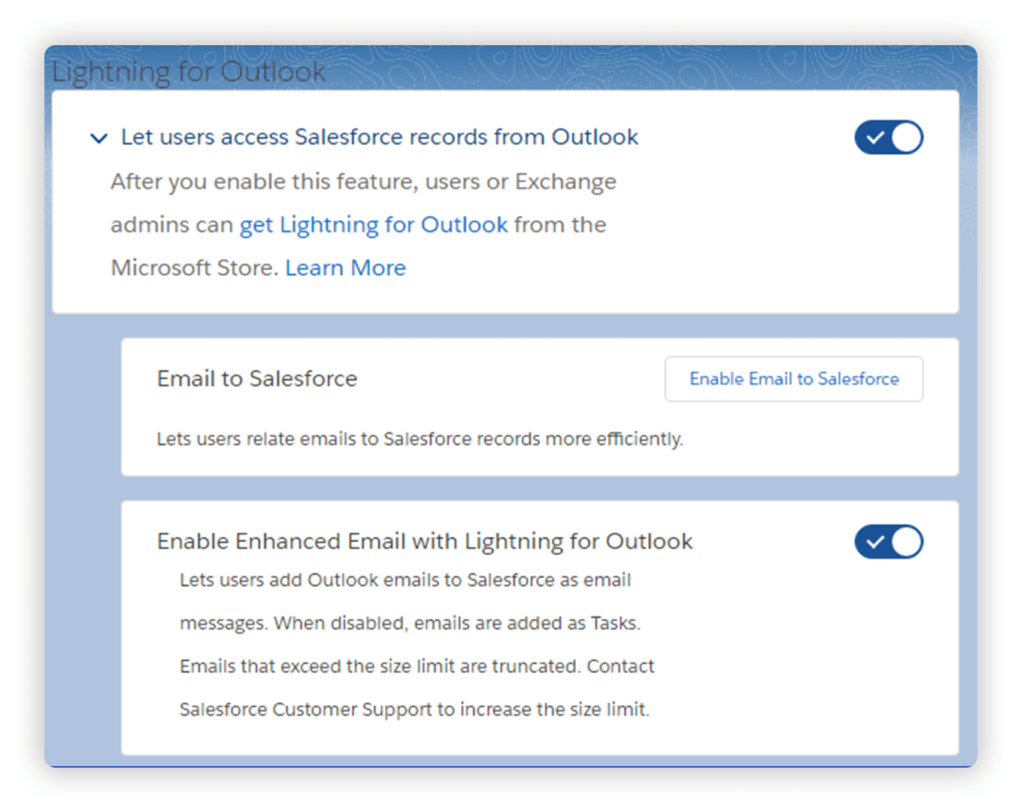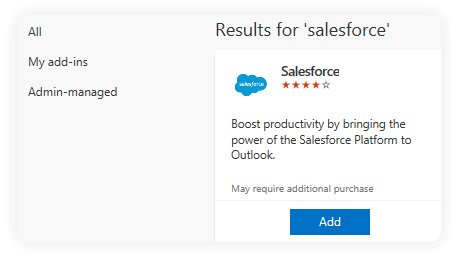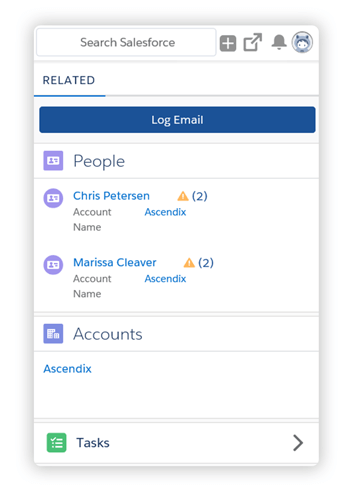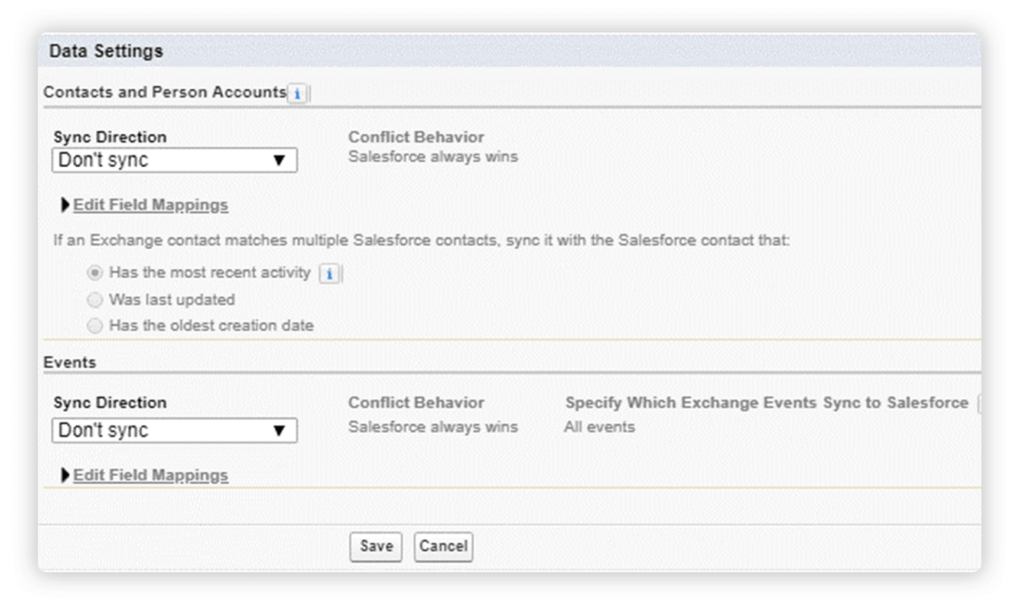Tired of having to jump back and forth between Salesforce and your Microsoft Outlook client to sync up emails and calendar activities? In this post, we’ll show how to install Salesforce for Lightning.
It’s a subject that pops up frequently when talking to clients about integration and best practices when using Ascendix products on Salesforce Lightning.
So, we recorded the How-to video to guide you through the whole process.
Requirements
Salesforce for Outlook is only available for users using Microsoft Outlook 2016/2013 or Microsoft Outlook for Mac 2016 using Mac OS X 10.10 or later. Users must also have access to Exchange Online with Office 365 or Exchange 2016/2013 on-premises.
Before we get started let’s make sure we meet the minimum specifications for integrating Salesforce for Outlook.
Outlook Program Versions:
- Outlook 2016
- Outlook 2013
Operating System:
- Windows 10
- Windows 8.1
- Windows 7
- MAC OS X 10.10 and up
Email Server:
- Exchange 2016/2013 on-premises
- Exchange Online with Office 365
Note: This information is gathered from the Trailblazer Community.
Enabling Salesforce for Outlook
You will need to get in touch with your Salesforce Administrator to enable Lightning for Outlook.
- Once you are logged into Salesforce locate the Setup tab in the top right and select it.
- Then in the Quick Find bar on your left, type in Outlook Integration and Sync and select it.
- Now click on the grayed-out bar next to Let users access Salesforce records from Outlook to enable Lightning for Outlook.
- More options should now be available.
- Click on the grayed-out bar next to Enable Enhanced Email with Lightning for Outlook

Salesforce Lightning for Outlook Settings
Salesforce for Outlook Add-In
In your Outlook client locate the Get Add-ins icon on the top right of your home bar and search for “Salesforce” and enable the Add-in.

Salesforce add-in in Outlook
Once you have that enabled close out of this window.
Then select the Salesforce Cloud Icon that should appear in the top right.
You will be prompted to log in to your Salesforce instance.
Please note by enabling the add-in Outlook your Office 365 account will have the same functionality as well.

Outlook to Salesforce Lightning interface
Congratulations! Now your Outlook to Lightning interface is ready to use!
Enabling Lightning Sync
Disclaimer! We are not liable for any loss of data or data duplication caused by improper configuration of Lightning Sync. As a best practice back up your data before attempting any sort of syncing.
The following steps must be completed by your System Administrator. We recommend reading the following about Lightning Sync before continuing with the steps below.
- Locate Lightning for Outlook and Sync and enable Lightning Sync by selecting the grayed-out bar.
- Choose either OAuth 2.0 to login directly as Admin or choose Service Account
- Login and follow the instructions provided
- Once your connection is tested select New Config under Set Sync Settings and Check Status
- Select New Lightning Configurations
- Add a Configuration Name, check the active checkbox, add all users you wish to have a certain configuration
- Now choose your Sync Direction and additional settings

Enabling Lightning Sync for Outlook
- Save and configure your remaining settings and save again.
Frequently Asked Questions
Some of you got in touch with us with additional questions. In this section, we’ll post selected questions and our answers.
Q: What will be the mandatory requirements for the client to integrate outlook to Salesforce?
A: To find the minimal requirements to integrate Salesforce for Outlook please visit this link: Outlook Integration System Requirements.
To set up any sort of syncing, access to a service account or Exchange admin credentials is necessary as part of the configuration process. This is what handles impersonation between the user’s exchange mailbox and the exchange server.
Q: Can we integrate outlook to Salesforce without the ms exchange server stuff?
A: Without Exchange, you will not be able to use the Salesforce for outlook integration as this is a cloud integration
Q: I am curious about the version of Outlook. What’s the kind of license and installation? I am having a problem keeping the Salesforce Inbox tab ‘pinned’ in Outlook 2016. Thanks!
A: Salesforce inbox is a separate addition to Salesforce for Outlook. However, if you are using outlook 2013 or a not fully updated version of outlook 2016 you would have an issue with pinning.
Q: Can you please explain why you would need to enable the “Email to Salesforce” option? We have not enabled this option and are having problems connecting to Salesforce from Outlook 2016.
A: Email to Salesforce allows users to log emails from the Salesforce Side Panel as an actual email rather than as a task in previous versions of the integration.
Have you heard about our Productivity app for Salesforce Ascendix Search?
If you are reading this post, you are looking for ways to improve your or your team’s productivity.
Check out our Salesforce advanced searching and reporting app Ascendix Search.
For only $15/month, perform complex, multi-criteria searches across objects with a few clicks and without your Admin team.
Send mass emails, mass edit your records, export to Excel, add multiple tasks, notes, search using maps and charts, and much more.
Phillip Teng , CRM Implementation Engineer at Ascendix
Phil Teng is our resident expert on all things technical. He's a troubleshooting guru and is often the lead when it comes to supporting our clients with any technical challenges or limitations. He's the voice behind several video recordings of connecting Outlook or Gmail to Ascendix. To reach Phil and his team to report issues, errors, or tech questions, email support@ascendix.com We promise it's not a black box! When Phil is not slaying technical dragons during the day, he can be found house hunting, exploring new foods, and photographing his wife's Instagram posts.





 (18 votes, average: 4.90 out of 5)
(18 votes, average: 4.90 out of 5)
once you log into salesforce through the outlook plugin, How do you log out or change the user?
Hi Bill,
To log out or change your user click on the avatar icon in the top right corner of the Outlook Plugin and you should see an option to Log Out.
Hope it helps.